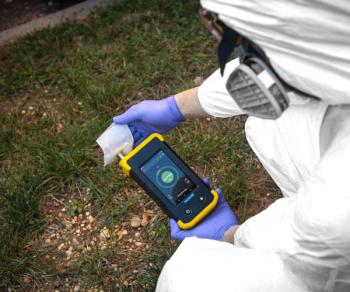
- Spectroscopy-12-01-2010
- Volume 25
- Issue 12
Market Profile: Handheld and Portable NIR
Demand for portable and handheld near infrared (NIR) instruments has exploded over the past several years, mirroring trends in other handheld spectroscopy techniques.
Demand for portable and handheld near infrared (NIR) instruments has exploded over the past several years, mirroring trends in other handheld spectroscopy techniques. Initially driven by the polymers and plastics industry, demand for the technique is now becoming significantly diversified, which should help drive strong growth for a number of years to come.
Significant technological advancements have enabled the development of practical low-cost and rugged spectrometers over the past several years, including NIR-based instruments. Smaller and more powerful batteries and improved electronics have helped, but the application of micro electromechanical system (MEMS) technology to the area was perhaps the most significant of these improvements.
Portable NIR spectroscopy market in 2009
The plastics and polymers industry has accounted for the largest industrial demand thus far for handheld NIR instruments, which have seen heavy use in the classification of used plastics for recycling. Applications in agriculture and food are becoming increasingly important to the handheld and portable market, which is only natural because of the heavy use of other configurations of NIR spectroscopy in the industry. The use of portable and handheld NIR also is increasing for incoming material inspection in the pharmaceutical industry.
Global demand for handheld and portable NIR developed from less than $10 million in 2005 to nearly $40 million in 2008 before being significantly impacted by the global recession in 2009. However, demand was expected to rebound strongly in 2010 and should continue on a pace of double-digit growth for several years to come.
The foregoing data were extracted from SDi's market analysis and perspectives report entitled The Global Assessment Report 11th Edition: The Laboratory Life Science and Analytical Instrument Industry, October 2010. For more information, contact Stuart Press, Vice President, Strategic Directions International, Inc., 6242 Westchester Parkway, Suite 100, Los Angeles, CA 90045, (310) 641-4982, fax: (310) 641-8851,
Articles in this issue
about 15 years ago
Spectroscopy Market: Weathering the Storm and on the Path to Recoveryabout 15 years ago
2010 Editorial Indexabout 15 years ago
Neutron Spectroscopyabout 15 years ago
A New Adventureabout 15 years ago
Fat Finger, Falsification, or Fraud?about 15 years ago
High-Resolution NIR Analysisabout 15 years ago
Corporate ProfilesNewsletter
Get essential updates on the latest spectroscopy technologies, regulatory standards, and best practices—subscribe today to Spectroscopy.




